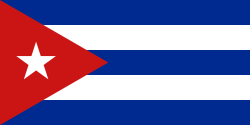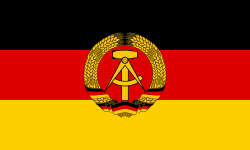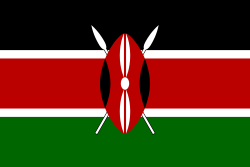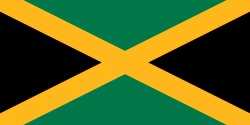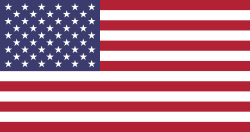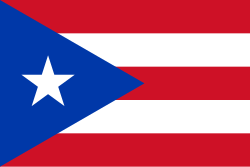Fjädervikt i boxning vid olympiska sommarspelen 1976
| Boxning vid olympiska sommarspelen 1976  | ||||
|---|---|---|---|---|
| Lätt flugvikt | ||||
| Flugvikt | ||||
| Bantamvikt | ||||
| Fjädervikt | ||||
| Lättvikt | ||||
| Lätt weltervikt | ||||
| Weltervikt | ||||
| Lätt mellanvikt | ||||
| Mellanvikt | ||||
| Lätt tungvikt | ||||
| Tungvikt | ||||
Resultat från boxning vid olympiska sommarspelen 1976 och herrarnas fjädervikt. Boxarna vägde under 57 kg. Tävlingarna arrangerades i Montréal.
Medaljörer
| Klass | Guld | Silver | Brons |
| Fjädervikt | Richard Nowakowski | Leszek Kosedowski Juan Paredes |
Resultat
Första rundan
| Vinnare | Resultat | Förlorare |
|---|---|---|
| Första rundan | ||
| WO | ||
| 5-0 | ||
| WO | ||
Andra rundan
| Vinnare | Resultat | Förlorare |
|---|---|---|
| Andra rundan | ||
| 3-2 | ||
| WO | ||
| 5-0 | ||
| WO | ||
| WO | ||
| WO | ||
| WO | ||
| 5-0 | ||
| 5-0 | ||
| KO-2 | ||
| WO | ||
| KO-1 | ||
| 5-0 | ||
| WO | ||
| KO-1 | ||
| 5-0 | ||
Tredje rundan
| Vinnare | Resultat | Förlorare |
|---|---|---|
| Tredje rundan | ||
| 4-1 | ||
| RSC-3 | ||
| 5-0 | ||
| 4-1 | ||
| 3-2 | ||
| DSQ-3 | ||
| 5-0 | ||
| 5-0 | ||
Kvartsfinaler
| Vinnare | Resultat | Förlorare |
|---|---|---|
| Kvartsfinaler | ||
| RSC-3 | ||
| 5-0 | ||
| 4-1 | ||
| 3-2 | ||
Semifinaler
| Vinnare | Resultat | Förlorare |
|---|---|---|
| Semifinaler | ||
| 5-0 | ||
| 5-0 | ||
Final
| Vinnare | Resultat | Förlorare |
|---|---|---|
| Final | ||
| KO-2 | ||
| |||||
Media som används på denna webbplats
Flag of Romania, (21 August 1965 - 22 December 1989/officialy 27 December 1989).

Construction sheet of the Flag of Romania as depicted in Decree nr. 972 from 5 November 1968.
- l = 2/3 × L
- C = 1/3 × L
- S = 2/5 × l
Kanadas flagga, införd 1965; denna version med Pantone‐nyanser. Nuvarande utformning ersatte den tidigare kanadensiska Red Ensign.
Flag of the Socialist Federal Republic of Yugoslavia (1946-1992).
The design (blazon) is defined in Article 4 of the Constitution for the Republic of Yugoslavia (1946). [1]
Den Dominikanska republikens flagga består av ett vitt centrerat kors som sträcker sig hela vägen ut till flaggans kant. I mitten på korset sitter ett emblem med en bibel, ett gyllene kors och sex dominikanska flaggor. Emblemet är omgivet av olivkvistar och palmblad. Under emblemet står ”Republica Dominicana” och ovanför ett band med landets mottot ”Dios, Patria, Libertad” (”Gud, Landet, Frihet”).
Variant version of a flag of Japan, used between January 27, 1870 and August 13, 1999 (aspect ratio 7:10).
Flag of Jamaica. “The sunshine, the land is green, and the people are strong and bold” is the symbolism of the colours of the flag. GOLD represents the natural wealth and beauty of sunlight; GREEN represents hope and agricultural resources; BLACK represents the strength and creativity of the people. The original symbolism, however, was "Hardships there are, but the land is green, and the sun shineth", where BLACK represented the hardships being faced.
Flag of South Korea (1949-1984)
The national flag of Kingdom of Thailand; there are total of 3 colours:
- Red represents the blood spilt to protect Thailand’s independence and often more simply described as representing the nation.
- White represents the religion of Buddhism, the predominant religion of the nation
- Blue represents the monarchy of the nation, which is recognised as the centre of Thai hearts.
Författare/Upphovsman: Scroch, Licens: CC BY-SA 3.0
Flag of Bulgaria (1971-1990). Flag of Bulgaria with Bulgarian coat from 1971.
Burkina Fasos flagga
Flag of Zambia before 1996
Flag of South Korea (1949-1984)
The flag of Brazil from 1968 to 1992 with 23 stars.
Pictograms of Olympic sports - Boxing. This is unofficial sample picture. Images of official Olympic pictograms for 1948 Summer Olympics and all Summer Olympics since 1964 can be found in corresponding Official Reports.
Flag of People's Republic of Mongolia 1945-1992
Flag of the Socialist Federal Republic of Yugoslavia (1946-1992).
The design (blazon) is defined in Article 4 of the Constitution for the Republic of Yugoslavia (1946). [1]
Variant version of a flag of Japan, used between January 27, 1870 and August 13, 1999 (aspect ratio 7:10).
Flag of Second Polish Republic and later People's Republic of Poland in period from March 29, 1928 to March 10, 1980. Red shade used here is HTML "vermilion" #E34234. Proportion 5:8.
Flag of Ethiopia (1975–1987)
The Egyptian flag (1972-1984). Also the flag of Libya (1972-1977) and Syria (1972-1980), when the three countries formed the nominal “Federation of Arab Republics”. (For a map of the federation, see Image:Esl.PNG.)
The Arab text in the scroll held by the “Golden Hawk of Qureish” reads Arabic اتحاد الجمهوريات العربية, ittiħād al-jumhūriyyāt al-`arabiyya, i.e. the Federation (literally “Union”) of Arab Republics — in a quasi-Kufic script (in its original form, with a very ornamental letter dal د).
Flag of Romania, (21 August 1965 - 22 December 1989/officialy 27 December 1989).

Construction sheet of the Flag of Romania as depicted in Decree nr. 972 from 5 November 1968.
- l = 2/3 × L
- C = 1/3 × L
- S = 2/5 × l
Författare/Upphovsman: Thomasbellooficial, Licens: CC BY-SA 4.0
Flag of the Republic of Venezuela 1954-2006.
Flag of the Philippines in the previous official shade of Cable No. 70077 or National Flag Blue. In use for 60 years, 8 months and 18 days from March 25, 1936, to February 25, 1985 and from February 25, 1986, to February 12, 1998.
Construction sheet approved by the Philippine Heraldry Committee on January 24, 1955.
The exact colors adopted by the Philippine Heraldry Committee in 1955 was as follows:
The red color bearing Cable No. 70180; the blue color, Cable No. 70077; the yellow color, Cable No. 70068; and the white color, Cable No. 70001.